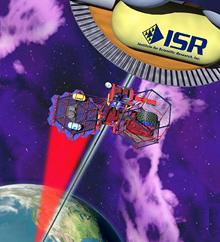Scientist Bradley Edwards has an idea out of this world - an elevator that will climb a hundred thousand kilometers into space.

President Bush wants to return to the moon and place a man on Mars, but the scientist Bradley Edwards has an idea out of this world - an elevator that will climb a hundred thousand kilometers into space.
Edwards believes that the initial version could become operational in 15 years, a year ahead of Bush's schedule to return to the moon. He estimates the cost at 10 billion dollars, a small amount compared to all other space initiatives.
"This is not new physics - nothing new has been discovered, there is no need to invent anything from scratch" he said. "If there are disruptions due to delays in the budget or due to the weather, it will be possible to extend the time, but 15 years seems to me a realistic estimate for the question of when we can raise one such elevator.
Edwards is not just someone with an idea. He is director of the Space Elevator Project at the Institute for Scientific Research in Fairmont, Virginia. NASA has already allocated over half a million dollars to research the idea and Congress has appropriated another 2.5 million dollars. "A lot of people at NASA were excited about the idea," says Robert Casanova, director of NASA's Advanced Concepts Institute in Atlanta.
Edwards believes that a space elevator will enable a safe and inexpensive form of space flight that may eventually be used to transport humans to the planets.
Edwards' elevator will climb on top of a cable made of nanotubes - tiny groups of carbon atoms several times stronger than steel. The cable will be about a meter wide and less than a piece of paper thick, but it will be able to support a 13-ton elevator.
The cable will be able to be connected to a platform on the equator, not far from the coast of South America, where the winds are moderate, the weather is good all year round and the number of commercial flights in the area are few. The platform will also be mobile so that the cable can be moved to avoid malfunctions in satellites orbiting the Earth mainly in low orbit.
David Breen, a science fiction writer and professor of physics at San Diego State University, believes the concept is sound but doubts that such a cause could work in 2019. "It will not be enough that our grandchildren will regularly use a space elevator," he said. "But it will take at least another generation before we gather all the necessary technologies."
The institute where Edwards works recently organized the third annual conference on space elevators in Washington. The keynote speaker at the three-day conference is John Mankins, Director of Human and Robotic Technology at NASA. The main topic was the technological challenges and their solutions as well as the economic applicability of the proposed elevator.
The idea is not new. A Russian scientist, Konstantin Tsiliokovsky, predicted this a century ago and the book by Arthur C. Clard, The Fountains of Paradise, published in 1979, talked about an elevator at an altitude of 36 thousand kilometers and permanent colonies on the moon, Mercury and Mars. The difference now, says Edwards, is that "we now have materials that we can actually use for construction."
He envisions launching parts of the cable into space using rockets. The "climber" - his version of the elevator itself - can connect to the cable and be used to raise additional parts of the cable until it is eventually stretched to the earth. A counterweight will be attached to the cable on the side of the space.
Edwards compares planning to "spinning a ball on a string around your head." The wire is the cable and the ball at the end provides the counterweight. It is the rotation of the earth that will hold the cable tight.
The elevator will receive electricity from photovoltaic cells that will convert light into electricity. A laser that will be attached to the platform will be able to provide the lighting for the elevator itself. Edwards said.
He says he needs at least two more years to develop the nanotubes to ensure the necessary strength. After that, he believes it will be possible to start work on the project.
"The main obstacle will be mainly political or financial and these two are two sides of the same thing. " said. "Technology, in my opinion, is no longer the main thing."
